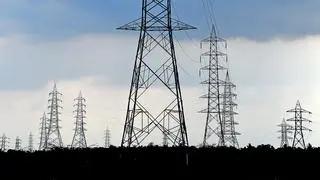It’s been a remarkable turnaround for air traffic in the country. At 39 million, domestic passenger numbers during January to June 2015 have grown nearly 20 per cent over the same period last year.
That’s almost double the growth rate seen in calendar 2014 when the revival in passenger numbers started gathering pace. The green shoots started appearing in 2013 (4 per cent growth) after a disastrous 2012 when air traffic had plummeted 3.5 per cent after years of double-digit rise. It’s back again to the good, old days, it seems. In fact, traffic growth this year has been better than even the pre-2012 period.
The steep rise in air passenger numbers is primarily due to the sharp drop in the price of aviation turbine fuel (ATF), a result of the rout in crude oil over the last year. A kilolitre of the fuel in Delhi now costs about ₹46,400, 34 per cent cheaper from a year back.
Looking upThis has enabled airlines across the board to come up with attractive offers to woo passengers. An improvement in economic sentiment, particularly lower inflation, also seems to have helped.
Airlines would be hoping that cheap oil and the passenger surge continue. After a particularly bad 2013-14 fiscal, the worst for the sector, financial performance looked up in 2014-15 with losses reducing significantly.
The momentum has continued into the first quarter of the current fiscal. SpiceJet which had a near-death experience late last calendar has posted profit in the June quarter, the second profitable quarter in a row. Jet Airways, the other listed airline, is also expected to do well.
The market optimism from SpiceJet’s good show has rubbed off on Jet Airways too — both the stocks are up 50-60 per cent since mid-June.
These two airlines may soon have company on the bourses with IndiGo having filed its papers for an initial public offering; the issue is expected to hit the market this year.
Big share in the skyIn an operating environment infamous for being among the toughest in the world, thanks to high tax on fuel, restrictive rules on flying and inadequate infrastructure, IndiGo has been consistently profitable over the years even while other airlines bled. It has also expanded aggressively and has been able to make the most of the positive trends in passenger traffic in the country. From 31.6 per cent last June, the airline’s market share in the domestic skies has surged to 38.4 per cent. This places it far ahead of nearest competitor Jet Airways which has 21 per cent of the pie. New entrants such as Air Asia and Vistara haven’t made much of a dent so far with their market share in low single digits. This could change though as they add aircraft and expand operations.
Meanwhile, swelling passenger numbers are attracting more players to the Indian skies. With regional airlines Air Pegasus and Trujet commencing operations recently, there are now 10 domestic airlines.
A few more are waiting in the wings. The skies are set to get crowded. Unless passenger growth sustains at high levels, the cycle of creative destruction can set in, as there may not be room for everyone.








Comments
Comments have to be in English, and in full sentences. They cannot be abusive or personal. Please abide by our community guidelines for posting your comments.
We have migrated to a new commenting platform. If you are already a registered user of TheHindu Businessline and logged in, you may continue to engage with our articles. If you do not have an account please register and login to post comments. Users can access their older comments by logging into their accounts on Vuukle.